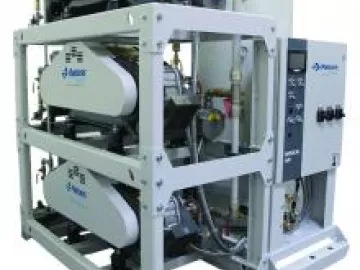The Importance of Dewpoint for Medical Air Systems
The most abundant contaminant in any compressed air system is water. This can be in either liquid or vapour form. Atmospheric air is already very wet, and becomes saturated when compressed. This water vapour will condense when the temperature drops, after the compressor, and will damage air receivers, pipework and equipment. For this reason coalescing filters and then dryers are used to remove the bulk of this water.




